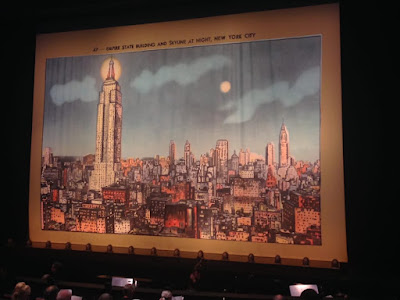With the Holiday Season underway all around the world, my thoughts turn to one of my favourite places, Provence, located in the south of France. It is particularly charming and beautiful at this time of year, and includes many unique traditions -- some of which are centuries-old.
 |
| Christmas Decorations along Cours Mirabeau in Aix-en-Provence Photo Provenance unknown |
In Provence, the Christmas Season is called “La Calendale“. It starts on the 4th of December, the day of the patron Sainte Barbe, i.e., Saint Barbara. (SIDE NOTE: the French calendar attributes most days of the year to a different patron Saint.) The overall Season ends on the following February 2nd at Candlemas, although Christmas observances and festivities in Provence culminate on the 24th and 25th of December.
According to tradition, the Provençal Christmas season begins on December 4th every year, the day of the patron Sainte Barbe, Saint Barbara’s Day. This is when families fill three small dishes—three representing the Trinity—with wet cotton balls sprinkled with wheat or lentil seeds. These seeds are kept moist in the hopes that they will sprout. Twenty days later, on December 24th, if the wheat or lentil shoots have grown straight and green, the young shoots are wrapped in yellow and red ribbons, and the finest crop is placed on the Christmas table and believed to be a sign that there will be a good harvest or a positive financial outlook the next year. On the following day, Christmas Day, the wrapped shoots are used to decorate the Nativity scene, remainging there to thrive until Epiphany in January. Thereafter, the sprouted shoots are planted.Towns all over France have Nativity Scenes called crèches, but in Provence they are uniquely different because they don't depict Jesus, Mary, and Joseph surrounded by the Wise Men. Instead, the "crèche provençal" is filled with santons, which are adorable little figurines that depict characters from village life like the baker and the fishwife. This is because the display of crèches, like much of religious life, was banned during the French Revolution which forbade public nativities.
Consequently, “private” nativities developed in Provençal homes. A clever artist from Marseille, Jean Louis Lagnel, a native of Marseille, invented "santons" in 1800 and turned the crèche into a village scene using his figurines instead of the usual Biblical characters. These miniature figurines originally were made from moulds and used crustless bread. This tradition was passed down from father to son with a great deal of secrecy from the 19th Century onwards. Ironically, the anti-religious zealots of the French Revolution somehow missed the fact that the word santon means “little saint.” Today, the santons are generally made from either argyle or earthenware and are painted and dressed. The profession of Santonnier is now recognized as a traditional Provençal craft.
Parades take place all over Provence during the Christmas season, with songs played on fifes and tambourines and townspeople in traditional dress. Especially popular is the lady’s Arlésienne outfit, a long, flowing dress with scarves over the shoulders, and hair pinned up. One of the most entertaining parades is La Bravade Calendale of Aix-en-Provence which originated during the mid-13th Century in the year 1256 instituted by Charles 1st of Anjou, Count of Provence, upon his returning from the Crusade with his brother Saint Louis. It marks the Winter Solstice (St. John the Evangelist), the longest night of the year. Very close to Christmas, the "Winter Saint John" celebrates the passage to the new year. Parade participants are dressed in colourful costumes, some prance about dressed as dancing horses, young men with huge flags spin and hurl the flags in the air like jugglers, and the procession includes music, games and dances.
=================================================
(Primary Sources and Photo credits: Provence-Alpes-Cote d'Azur Tourism Board; Provence Days; French Moments; Véronique Pagnier; The Good Life France; Perfectly Provence; aixenprovence.fr)
©2023 Snobby Tours®, Inc. All Rights Reserved.








